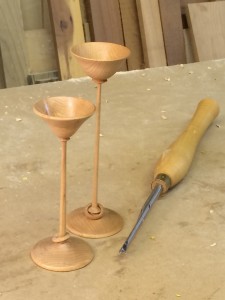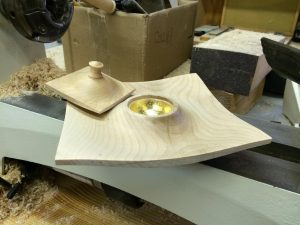Taking Woodworking Classes on what You Already Know
*** previously published on Popular Woodworking's Blog*** Continuing education should be a priority in your life – especially in areas such as favorite hobbies! The longer you travel down the path of a particular subject, however, you gain more knowledge and might feel a bit more advanced than available offerings. Many classes seem targeted toward beginners.
But as woodworkers, I think we’re lucky because in addition to raw knowledge, there is a kinetic aspect to our education. While you might already know how to make a box, taking a class from a master box maker and participating in that class “the right way” will return rewards. (Plus there’s an argument that by taking the specific project out of the equation, you’ll learn more because you focus on items you can use in any project.)
It really does do my educator’s heart good when I see the likes of Peter Follansbee and Frank Strazza taking classes from fellow masters in their specialized fields, then going on social media to share what a great experience it was and how much they learned.
I admit I’ve been slack in my own education these past few years as I worked on other little endeavors on an ever-tightening budget. So when our local woodturning club had a (not a raffle in the state of Texas) for a class with Jimmy Clewes, I jumped at the chance to throw in my $5. Especially because I’d never had a proper turning class. Clewes is a woodturning tour de force. He’s a “British-born-and-raised but now tried-and-true American” woodturner who seemingly is traveling the world on an unending tour on the demonstration and teaching circuit. If you ever get a chance to meet him, you’ll know why he’s in demand; he’s very entertaining and an excellent teacher.
The two classes I “won” were on turning a long-stemmed goblet and making a small box – two things I’ve done before, many times. So my first job as a student was to forget what I knew.
 Woodturners’ tool grinds are personal. I really like my grinds. But the first thing I did was waste away $10 of steel to reshape my bowl gouge to match Clewes’. His class, his tools, his techniques. That way, when I mimicked his movements, his posture and his presentation, I had a better chance of experiencing the feel he gets as the tool interacts with the wood. And that’s the point of forgetting – to get inside the teacher’s “feel,’ no matter how much experience you might have.
Woodturners’ tool grinds are personal. I really like my grinds. But the first thing I did was waste away $10 of steel to reshape my bowl gouge to match Clewes’. His class, his tools, his techniques. That way, when I mimicked his movements, his posture and his presentation, I had a better chance of experiencing the feel he gets as the tool interacts with the wood. And that’s the point of forgetting – to get inside the teacher’s “feel,’ no matter how much experience you might have.
For example, I’ve always used a fairly long straight grind on the wings of my bowl gouge; Clewes favors a somewhat shorter, more upright and pronounced curve. We both have reasons for our preferences, and both will get you somewhat the same results. But if I hadn’t taken his class and worked in “his” way, it’s unlikely I would have experienced the benefits – and disadvantages – of his grind and techniques. By being there, I got to witness his grip on the gouge, pressure differences between his hands, the angle of the handle and so forth – each of which affect the feel and change the results. (That’s something you simply can’t get from a video.)
 That bowl-gouge grind and presentation are only two of the little tidbits I managed to steal from the man. I also learned Clewes’ approach to refining and sizing the inside of thin hollows; his use of the classic-grind bowl gouge as a skew doing a shaving cut; his method of negative-rake scraping using a swept-back spindle gouge. These are all now technique resources in my future work.
That bowl-gouge grind and presentation are only two of the little tidbits I managed to steal from the man. I also learned Clewes’ approach to refining and sizing the inside of thin hollows; his use of the classic-grind bowl gouge as a skew doing a shaving cut; his method of negative-rake scraping using a swept-back spindle gouge. These are all now technique resources in my future work.
So my suggestion – no matter how experienced you might be: Take a class. Take a class even if you already know how to make the project. And forget what you know before walking in the door.
